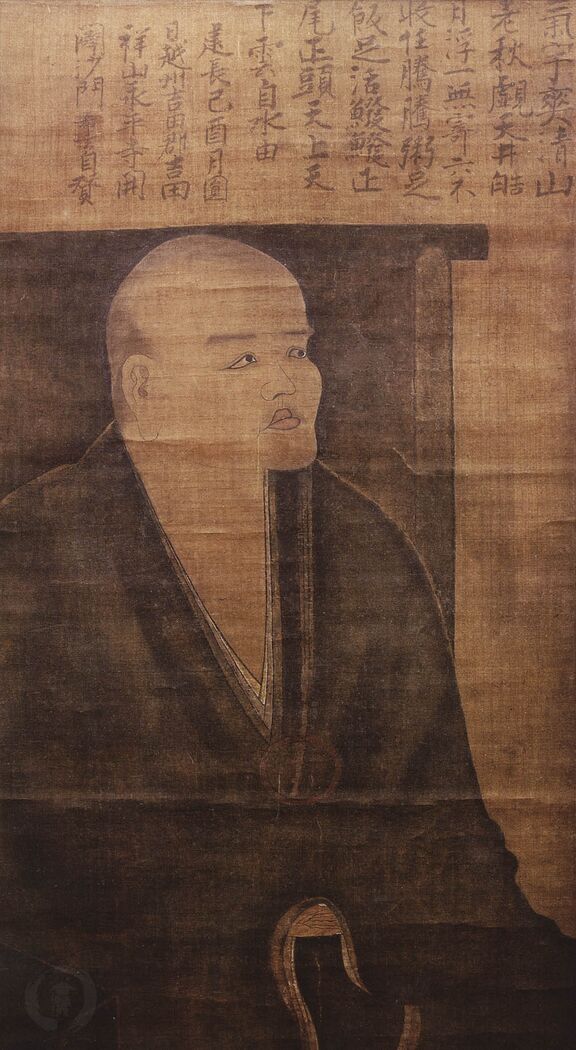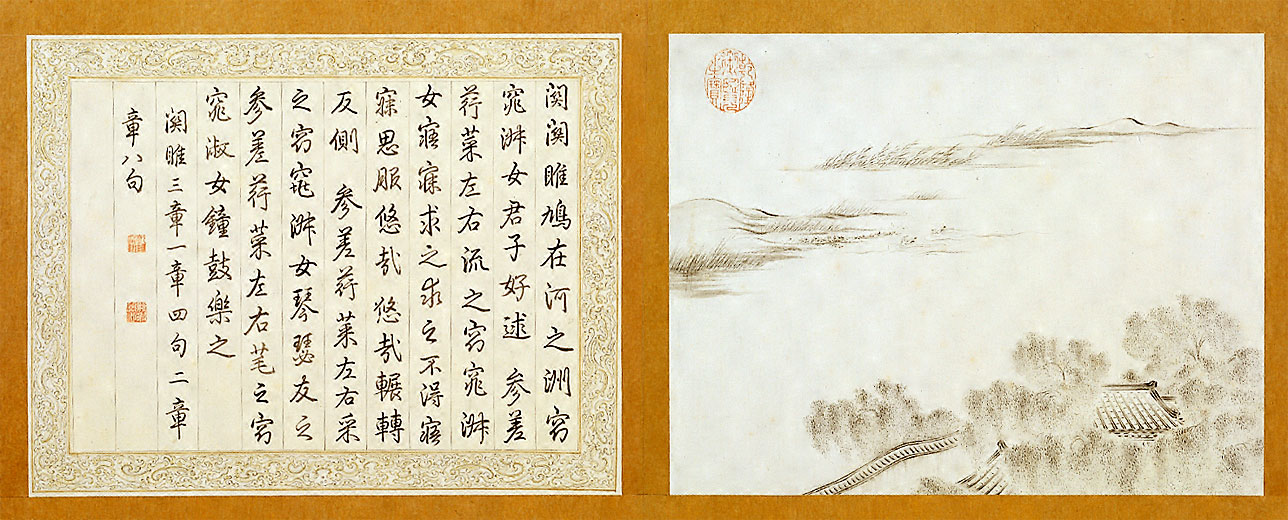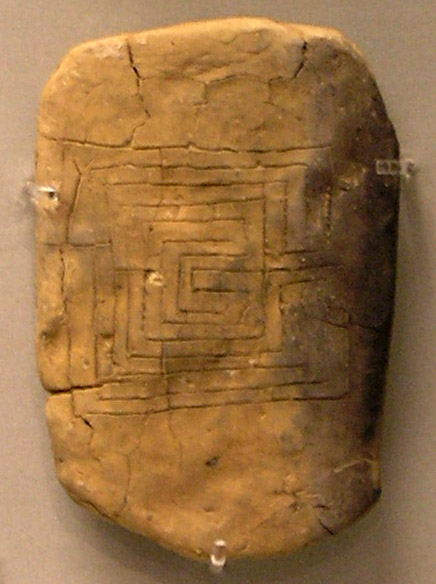|
Busshō (Shōbōgenzō)
''Busshō'' (), or ''Buddha Nature'', is the third book of the ''Shōbōgenzō'' by the 13th century Sōtō Zen monk Eihei Dōgen. It was written in the fall of 1241 at Dōgen's monastery Kōshōhōrin-ji in Kyoto. As the title implies, the work is a discussion of the concept of buddha nature, laying out Dōgen's unique viewpoint on what the term means. While more typical interpretations see Buddha-nature as the inherent prospect of becoming a buddha, or alternatively a sort of life force within us, in ''Busshō'' Dōgen interprets Buddha-nature simply as concrete reality itself. He presents this thesis in his characteristically difficult style using frequent allusions to and comments on classical Zen literature, as well as complex word play hinging on creative interpretations of Classical Chinese sentence structure. Interpretations of buddha nature The literature of Mahāyāna Buddhism includes many discussions and comments on the notion of buddha nature, and its exact meaning ha ... [...More Info...] [...Related Items...] OR: [Wikipedia] [Google] [Baidu] |
Dōgen
was a Japanese people, Japanese Zen Buddhism, Buddhist Bhikkhu, monk, writer, poet, philosopher, and founder of the Sōtō school of Zen in Japan. He is also known as Dōgen Kigen (), Eihei Dōgen (), Kōso Jōyō Daishi (), and Busshō Dentō Kokushi (). Originally ordained as a monk in the Tendai, Tendai School in Kyoto, he was ultimately dissatisfied with its teaching and traveled to China#Imperial China, China to seek out what he believed to be a more authentic Buddhism. He remained there for four years, finally training under Tiantong Rujing, Tiāntóng Rújìng, an eminent teacher of the Caodong, Cáodòng lineage of Chan Buddhism, Chinese Chan. Upon his return to Japan, he began promoting the practice of zazen (sitting meditation) through literary works such as ''Fukan zazengi, Fukanzazengi'' and ''Bendōwa''. He eventually broke relations completely with the powerful Tendai School, and, after several years of likely friction between himself and the establishment, left ... [...More Info...] [...Related Items...] OR: [Wikipedia] [Google] [Baidu] |
Shōbōgenzō
is the title most commonly used to refer to the collection of works written in Japan by the 13th-century Buddhist monk and founder of the Sōtō Zen school, Eihei Dōgen. Several other works exist with the same title (see above), and it is sometimes called the ''Kana Shōbōgenzō'' in order to differentiate it from those. The term ''shōbōgenzō'' can also be used more generally as a synonym for Buddhism as viewed from the perspective of Mahayana Buddhism. Source of the title Shōbōgenzō as a general term In Mahayana Buddhism, the term ''True Dharma Eye Treasury'' () refers generally to the Buddha Dharma; and in Zen Buddhism, it specifically refers to the realization of Buddha's awakening that is not contained in the written words of the Sūtra, sutras. In general Buddhist usage, the term "treasury of the Dharma" refers to the written words of the Buddha's teaching collected in the Sutras as the middle of the Three Jewels, Three Treasures of the Buddha, Dharma, and Sangha ... [...More Info...] [...Related Items...] OR: [Wikipedia] [Google] [Baidu] |
Buddha
Siddhartha Gautama, most commonly referred to as the Buddha (),* * * was a wandering ascetic and religious teacher who lived in South Asia during the 6th or 5th century BCE and founded Buddhism. According to Buddhist legends, he was born in Lumbini, in what is now Nepal, to royal parents of the Shakya clan, but renounced his home life to live as a wandering ascetic. After leading a life of mendicancy, asceticism, and meditation, he attained nirvana at Bodh Gayā in what is now India. The Buddha then wandered through the lower Indo-Gangetic Plain, teaching and building a monastic order. Buddhist tradition holds he died in Kushinagar and reached ''parinirvana'' ("final release from conditioned existence"). According to Buddhist tradition, the Buddha taught a Middle Way between sensual indulgence and severe asceticism, leading to freedom from ignorance, craving, rebirth, and suffering. His core teachings are summarized in the Four Noble Truths and the Noble Ei ... [...More Info...] [...Related Items...] OR: [Wikipedia] [Google] [Baidu] |
Dajian Huineng
Dajian Huineng or Hui-nengThe Sutra of Hui-neng, Grand Master of Zen, with Hui-neng's Commentary on the Diamond Sutra, translated by Thomas Cleary, Shambhala Publications, 1998 (; February 27, 638 – August 28, 713), also commonly known as the Sixth Patriarch or Sixth Ancestor of Chan (traditional Chinese: 禪宗六祖), is a semi-legendary but central figure in the early history of Chinese Chan Buddhism. According to tradition Huineng was an uneducated layman who suddenly attained awakening (Chinese: 見性, jianxing) upon hearing the Diamond Sutra. Despite his lack of formal training, he demonstrated his understanding to the fifth patriarch, Daman Hongren, who then supposedly chose Huineng as his true successor instead of his publicly known selection of Yuquan Shenxiu. Huineng is regarded as the founder of the "Sudden Enlightenment" Southern Chan school of Buddhism, which focuses on an immediate and direct attainment of Buddhist enlightenment. The '' Platform Sutra of the ... [...More Info...] [...Related Items...] OR: [Wikipedia] [Google] [Baidu] |
Nanyue Huairang
Nanyue Huairang (; Rōmaji: ''Nangaku Ejõ'') (677–744) was a Chinese Chan master. According to the Chan-tradition, he was the foremost student of Dajian Huineng, the 6th Patriarch of Ch'an (Zen) and teacher of one of his Dharma heirs, Mazu Daoyi. Life The ancestor of two of the Five Houses of Ch'an, Huairang is traditionally said to have studied with a Vinaya master and became ordained. Dissatisfied with his own progress, Huairang found Dajian Huineng in Shaozhou and became his disciple, which is recorded in various traditional biographies. Huairang is traditionally said to have given Dharma transmission to six individuals, the most prominent being Mazu Daoyi. Based on a critical reading of the textual evidence, the scholar John McRae notes that it is unlikely that Huairang actually practiced with Huineng. In the oldest version of the ''Platform Sutra'' found among the Dunhuang manuscripts, which dates to about 850 CE, Nanyue is not listed as a student of Huineng at all. A ... [...More Info...] [...Related Items...] OR: [Wikipedia] [Google] [Baidu] |
Sentient Beings (Buddhism)
In Buddhism, sentient beings or living beings are beings with consciousness, sentience, or in some contexts life itself.Getz, Daniel A. (2004). "Sentient beings"; cited in Buswell, Robert E. (2004). ''Encyclopedia of Buddhism''. Volume 2. New York, US: Macmillan Reference USA. (Volume 2): pp.760 Overview Getz (2004: p. 760) provides a generalist Western Buddhist encyclopedic definition: ''Sentient beings'' is a term used to designate the totality of living, conscious beings that constitute the object and audience of Buddhist teaching. Translating various Sanskrit terms (''jantu, bahu jana, jagat, sattva''), ''sentient beings'' conventionally refers to the mass of living things subject to illusion, suffering, and rebirth ( saṃsāra). Less frequently, ''sentient beings'' as a class broadly encompasses all beings possessing consciousness, including Buddhas and Bodhisattvas. Sentient beings are composed of the five aggregates (skandhas): matter, sensation, perception, mental form ... [...More Info...] [...Related Items...] OR: [Wikipedia] [Google] [Baidu] |
Mahāyāna Mahāparinirvāṇa Sūtra
The ''Mahāyāna Mahāparinirvāṇa Sūtra'' (Sanskrit; , ; Vietnamese: ''Kinh Đại Bát Niết Bàn'') or ''Nirvana Sutra'' for short, is an influential Mahayana, Mahāyāna Buddhist Sutra, scripture of the Buddha-nature class. The original title of the sutra was ''Mahāparinirvāṇamahāsūtra'' (''Great Scripture of the Great Perfect Nirvāṇa'') and the earliest version of the text was associated with the Mahāsāṃghika-Lokottaravāda school.Baums, StefanReview of Habata, ''Die zentralasiatischen Sanskrit‐Fragmente des Mahāparinirvāṇa‐mahāsūtra''. Indo‐Iranian Journal 58: 71–78./ref> The sutra was particularly important for the development of East Asian Buddhism. The ''Nirvana sutra'' uses the backdrop of the Buddha's Parinirvana, final nirvana to discuss the nature of the The Buddha, Buddha, who is described in this sutra as undying and eternal, without beginning or end. The text also discusses the associated doctrine of buddha-nature (Buddha-nature, tat ... [...More Info...] [...Related Items...] OR: [Wikipedia] [Google] [Baidu] |
Shakyamuni Buddha
Siddhartha Gautama, most commonly referred to as the Buddha (),* * * was a śramaṇa, wandering ascetic and religious teacher who lived in South Asia during the 6th or 5th century BCE and founded Buddhism. According to Buddhist legends, he was born in Lumbini, in what is now Nepal, to royal parents of the Shakya clan, but Great Renunciation, renounced his Householder (Buddhism), home life to live as a wandering ascetic. After leading a life of mendicancy, asceticism, and meditation, he attained Nirvana (Buddhism), nirvana at Bodh Gaya, Bodh Gayā in what is now India. The Buddha then wandered through the lower Indo-Gangetic Plain, teaching and building a Sangha, monastic order. Buddhist tradition holds he died in Kushinagar and reached ''parinirvana'' ("final release from conditioned existence"). According to Buddhist tradition, the Buddha taught a Middle Way between sensual indulgence and severe asceticism, leading to Vimutti, freedom from Avidyā (Buddhism), ignora ... [...More Info...] [...Related Items...] OR: [Wikipedia] [Google] [Baidu] |
Classical Chinese
Classical Chinese is the language in which the classics of Chinese literature were written, from . For millennia thereafter, the written Chinese used in these works was imitated and iterated upon by scholars in a form now called Literary Chinese, which was used for almost all formal writing in China until the early 20th century. Each written character corresponds to a single spoken syllable, and almost always to a single independent word. As a result, the characteristic style of the language is comparatively terse. Starting in the 2nd century CE, use of Literary Chinese spread to the countries surrounding China, including Vietnam, Korea, Japan, and the Ryukyu Islands, where it represented the only known form of writing. Literary Chinese was adopted as the language of civil administration in these countries, creating what is known as the Sinosphere. Each additionally developed systems of readings and annotations that enabled non-Chinese speakers to interpret Literary ... [...More Info...] [...Related Items...] OR: [Wikipedia] [Google] [Baidu] |
Mahāyāna Buddhism
Mahāyāna ( ; , , ; ) is a term for a broad group of Buddhist traditions, texts, philosophies, and practices developed in ancient India ( onwards). It is considered one of the three main existing branches of Buddhism, the others being Theravāda and Vajrayāna.Harvey (2013), p. 189. Mahāyāna accepts the main scriptures and teachings of early Buddhism but also recognizes various doctrines and texts that are not accepted by Theravada Buddhism as original. These include the Mahāyāna sūtras and their emphasis on the ''bodhisattva'' path and ''Prajñāpāramitā''. Vajrayāna or Mantra traditions are a subset of Mahāyāna which makes use of numerous tantric methods Vajrayānists consider to help achieve Buddhahood. Mahāyāna also refers to the path of the bodhisattva striving to become a fully awakened Buddha for the benefit of all sentient beings, and is thus also called the "Bodhisattva Vehicle" (''Bodhisattvayāna''). Damien Keown (2003), A Dictionary of Buddhism', ... [...More Info...] [...Related Items...] OR: [Wikipedia] [Google] [Baidu] |
Sōtō
Sōtō Zen or is the largest of the three traditional sects of Zen in Japanese Buddhism (the others being Rinzai school, Rinzai and Ōbaku). It is the Japanese line of the Chinese Caodong school, Cáodòng school, which was founded during the Tang dynasty by Dongshan Liangjie, Dòngshān Liángjiè. It emphasizes Shikantaza, meditation with no objects, anchors, or content. The meditator strives to be aware of the stream of thoughts, allowing them to arise and pass away without interference. The Japanese brand of the sect was imported in the 13th century by Dōgen Zenji, who studied Caodong, Cáodòng Buddhism () abroad in China. Dōgen is remembered today as the ancestor of Sōtō Zen in Japan along with Keizan, Keizan Jōkin. With about 14,000 temples, Sōtō is one of the largest Japanese Buddhist organizations. Sōtō Zen is now also popular in the West, and in 1996 priests of the Sōtō Zen tradition formed the Soto Zen Buddhist Association based in North America. Histor ... [...More Info...] [...Related Items...] OR: [Wikipedia] [Google] [Baidu] |
Allusions
Allusion, or alluding, is a figure of speech that makes a reference to someone or something by name (a person, object, location, etc.) without explaining how it relates to the given context, so that the audience must realize the connection in their own minds. When a connection is directly and explicitly explained (as opposed to indirectly implied), it is instead often simply termed a reference. In the arts, a literary allusion puts the alluded text in a new context under which it assumes new meanings and denotations. Literary allusion is closely related to parody and pastiche, which are also "text-linking" literary devices.Ben-Porot (1976) pp. 107–8 quotation: In a wider, more informal context, an allusion is a passing or casually short statement indicating broader meaning. It is an incidental mention of something, either directly or by implication, such as "In the stock market, he met his Waterloo." Scope of the term In the most traditional sense, ''allusion'' is a literar ... [...More Info...] [...Related Items...] OR: [Wikipedia] [Google] [Baidu] |






